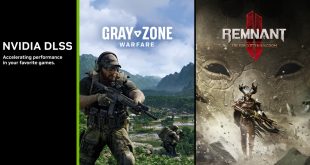One of the strongest features of Computex 2012, was the sheer volume of mobile gaming solutions on offer. We'll go through the specifics soon enough, but first we wanted to float a question about the state of serious gaming in the West. KitGuru scans pics from the recent Multiplay event at Telford as well as images from a LAN in Taipei – and wonders when we might see a little more mobile gaming action at LANs.
Since the days of the first Osbourne 1 ‘luggables', we've had a passion for mobile computing. In 1981, spending over £1,000 would get you a 11.7Kg monster with a monochrome 5″ display and a dangerously powerful 4MHz Z80 processor. You'd then be left to contemplate the take over of the world with your massive 64kb of random access memory. Whoop.
Roll the clock forward 31 years to 2012 and the same kind of money gets you a completely different experience, but what – exactly – can you buy that would be in a similar price range?
Enter products like the Alienware M17x from Dell at £1,458.
With 4 cores, 8 threads and a maximum Turbo Frequency of 3.3GHz, the Intel Core i7 3610 processor packs a serious punch. The cache on this processor alone, is almost 100x more memory that the first Osbourne 1 had in total. The M17x offers 6GB of 1600MHz DDR3 for fast data transfer around the system and to reduce the need for applications to hammer the hard drive – useful when you're gaming.
The 17.3″ display uses WLED technology which aim to deliver crisp colours and it's wide screen – for times when you just want to chill at a LAN and let someone else (in this case, Hollywood) provide the on screen entertainment.
Which brings us to the most important component in any gaming system, the graphics engine.
If you want to compete at a LAN, then you need fast/accurate reproduction for each frame in a game. The Alienware M17x uses a 2GB Radeon HD 7970 mobile chip which, at launch, was the fastest mobile graphics solution on the planet. In desktop terms, it is not as fast as a GTX580, but it lives in the same space.
Impressive stuff.
So what about the ‘cool factor'?
Well, the Alienware M17x uses the famous ‘stealth' design, so the device looks as though it is ready for battle and the deep red lights emanating from the back casing match the old ATI colour scheme close enough to feel like family. Add in a high quality set of headphones and the in-built THX audio engine should give you enough acoustic performance to hunt-on-sound in some games, which is not only pretty cool – but it could also boost your kill ratio.
That brings us back to the original question.
As you can see from the Core i7 CPU and mobile 7970 graphics [Dell has 6-series variants for those who prefer more green under the hood – Ed], there is certainly enough spec under the bonnet with this kind of laptop for a serious gamer to engage at a LAN event, so will we see them being used in larger numbers?
The answer is ‘Yes' – but the speed of uptake will depend on region. From what we've seen, gamers in the Far East are very willing to use a mobile gaming solution – which is fast, powerful, looks cool, is affordable and also relatively easy to move around the country. In the States, it's less popular and – here in the UK – we seem to have a LAN-stigma against mobile devices.

KitGuru says: There is certainly enough technology available in these machines – and the price of even a top spec system like the M17x is now affordable by many. Making mobile gaming a mainstream solution for LANs is going to come down to a HUGE push by Dell/Alienware, Asus, MSI and others – including AMD, Intel and nVidia – to create an environment where a gaming notebook becomes the norm, rather than a peculiarity.
Comment below or in the KitGuru forums.
 KitGuru KitGuru.net – Tech News | Hardware News | Hardware Reviews | IOS | Mobile | Gaming | Graphics Cards
KitGuru KitGuru.net – Tech News | Hardware News | Hardware Reviews | IOS | Mobile | Gaming | Graphics Cards


